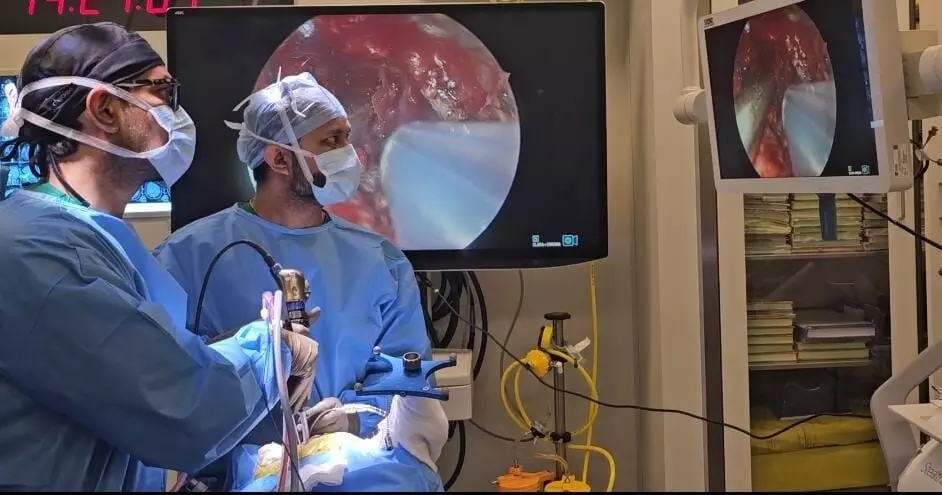AIG Hospitals in Hyderabad pioneers brain tumour removal via eye socket
The innovative approach used a small, carefully made path around the eye without any large skin incision, muscle or skull bone cutting
By Newsmeter Network
Hyderabad: In a first for India, a complex brain tumour from a 54-year-old female patient was successfully removed without requiring any cut or opening of the skull.
In this novel approach named ‘Endoscopic lateral transorbital approach’, the neurosurgical team at AIG Hospitals performed the surgery on the required brain areas through a small, carefully made path around the eye using a neuro-endoscope.
Case details
According to the hospital records, the patient was suffering from right-sided visual blurring and headaches for six months which was treated as viral encephalitis with no relief.
When her condition worsened, she came to AIG and upon evaluation, it was found that she was suffering from spheno-orbital cavernous meningioma (SOM), a benign tumour that forms in the region where the sphenoid bone (a bone located at the base of the skull, behind the eyes), the eye socket, and the cavernous sinus (a large vein located at the base of the skull) meet.
“Upon multiple discussions with our neurosurgical unit and ophthalmology team, we found that the case is appropriate for a new approach where we will be able to do the excision of the brain tumour without leaving any observable mark on the patient’s face/skull. It is indeed thrilling to say that we have successfully performed the operation and have set a new precedence in neurosurgery,” Dr Abhirama Chandra Gabbita, senior consultant neurosurgeon of AIG Hospitals said.
The patient discharged on the second day
Dr Subodh Raju, director of Neurosurgery at AIG Hospitals said, “The endoscopic approach allowed us to access the tumour through a small incision and since the brain is not directly touched or compressed during the procedure, there was no physical impact on the brain, resulting in less trauma to the surrounding tissues and a faster healing process. The patient has shown remarkable recovery and was discharged on the second day after the procedure returning to normalcy with no visible scar.”
The most important takeaway from this novel approach is a paradigm shift from large skin incisions, temporalis muscle cutting, no requirement for skull bone cutting and brain retraction in such cases of brain tumours.